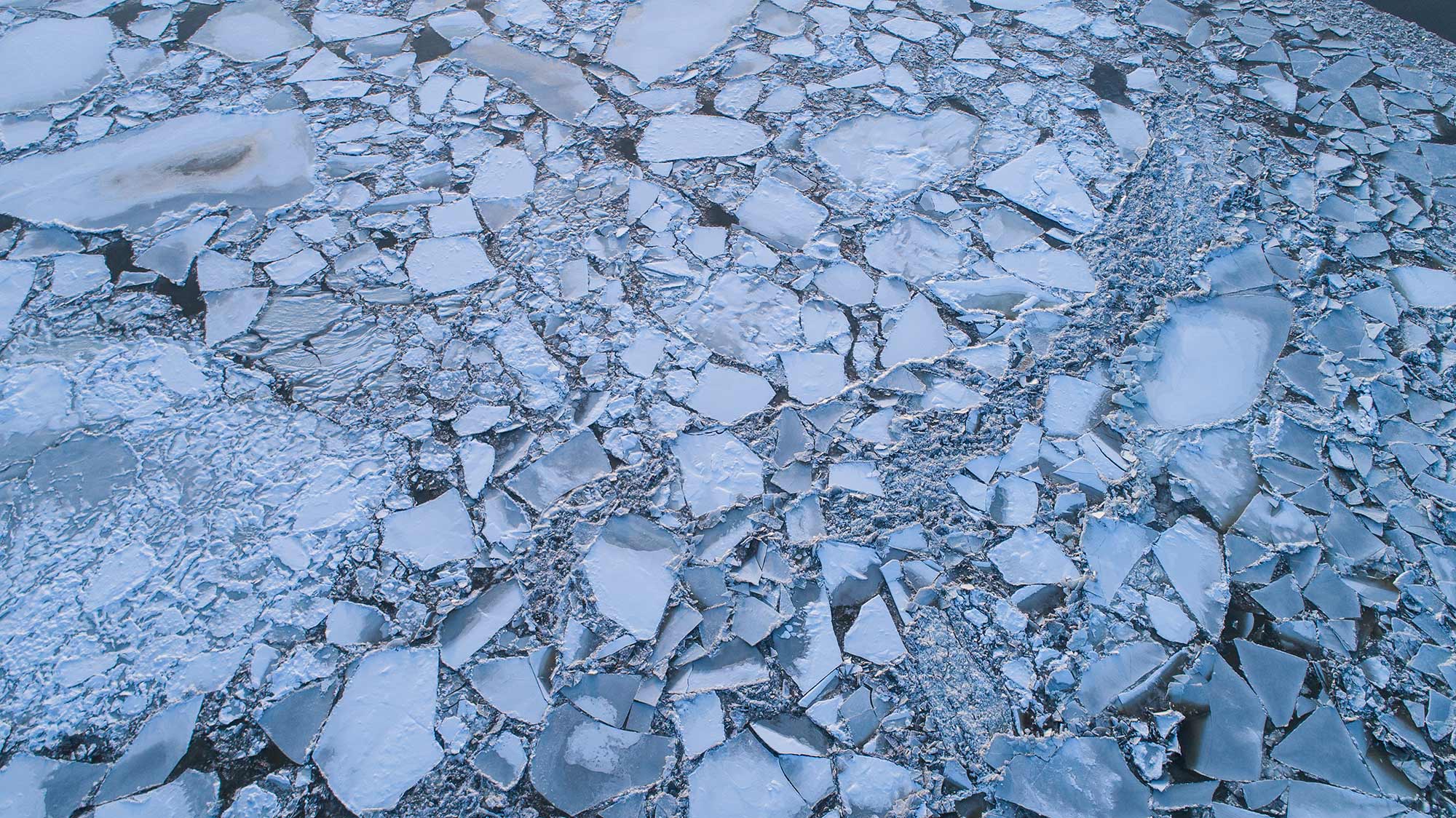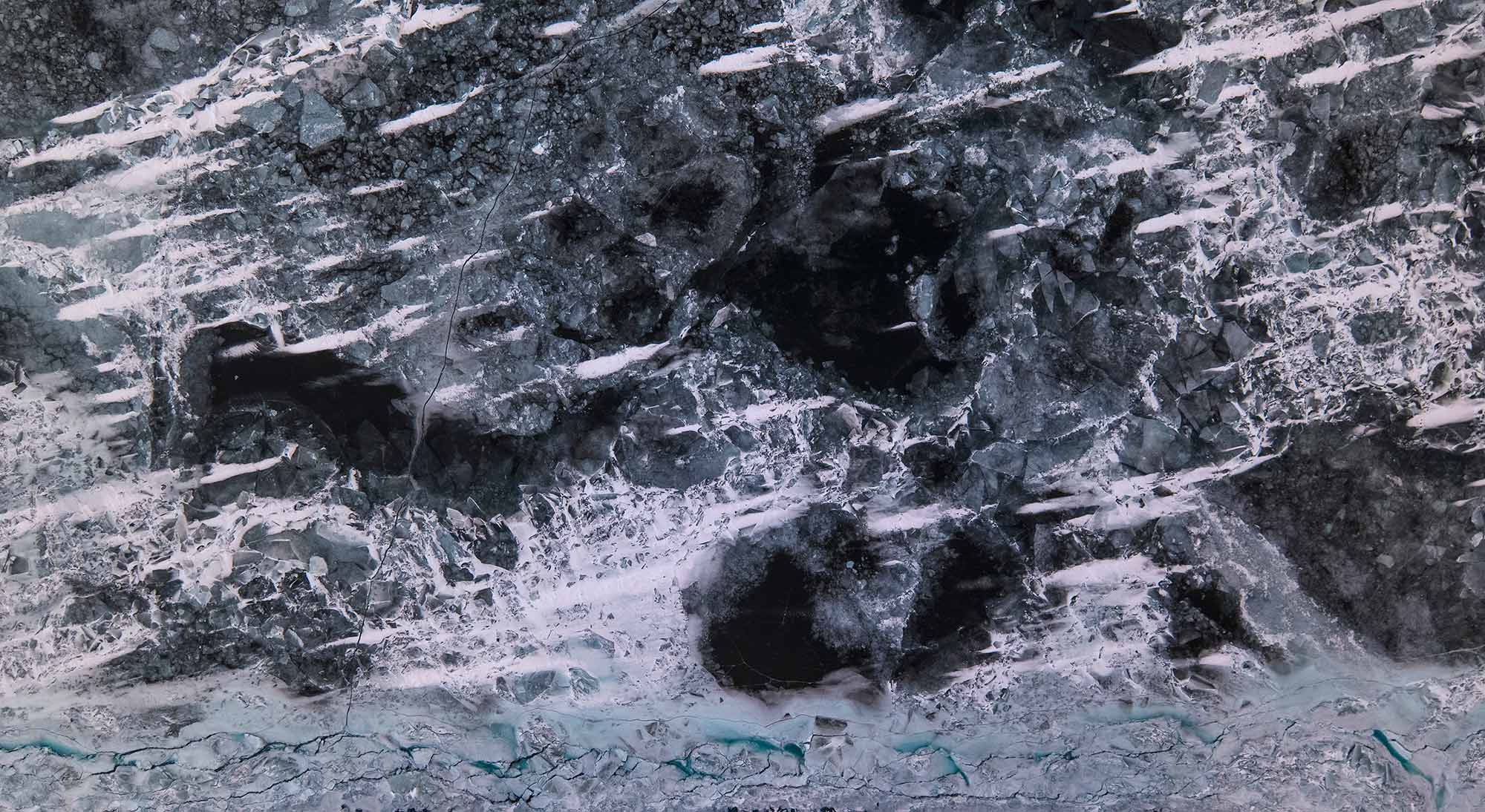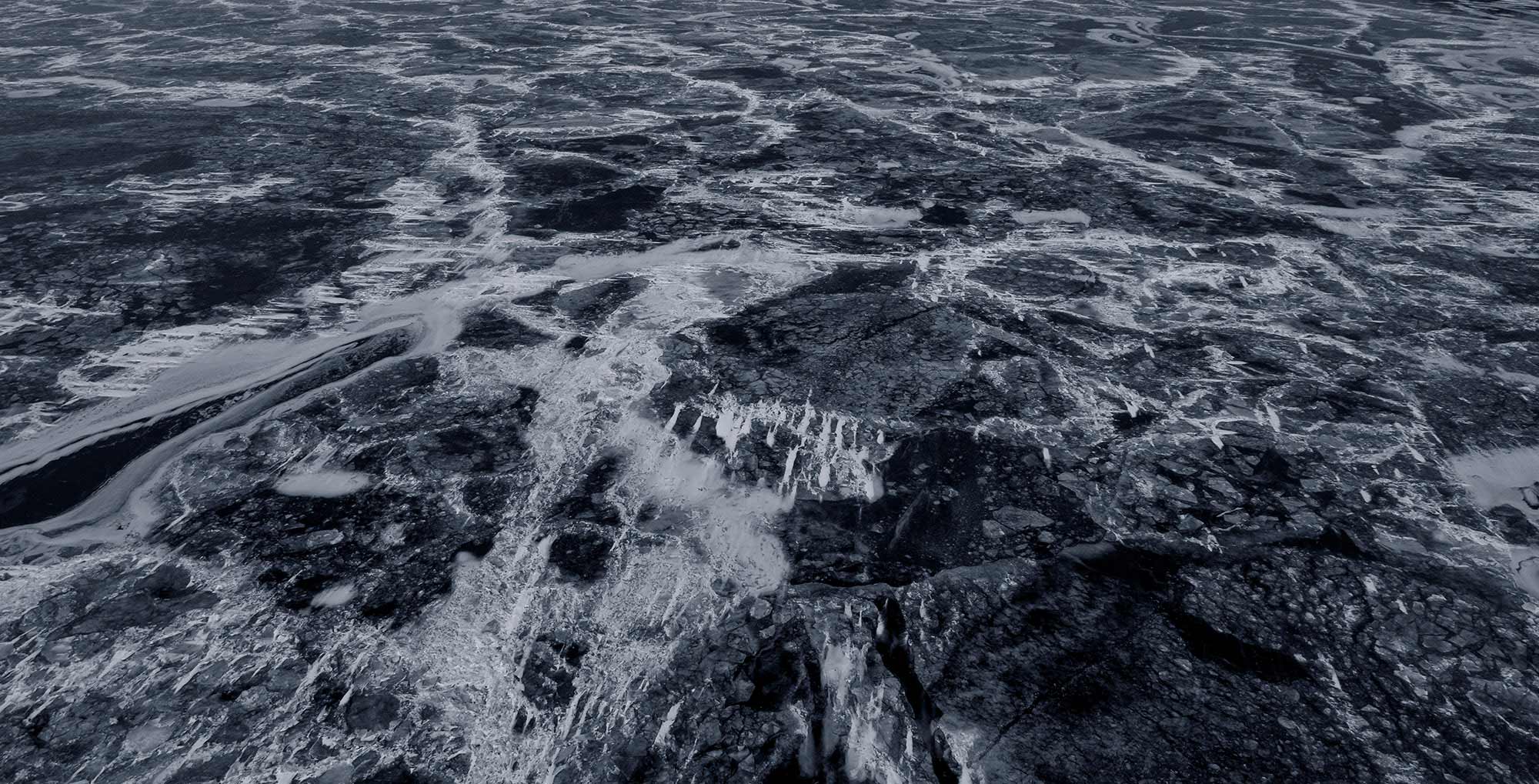ON THE ICE
A Cold Winter Grips the Hudson
Story by Jon Bowermaster
Photography by Devin Pickering
Photography by Devin Pickering
t’s impressive how cold two degrees Fahrenheit feels on your cheeks, especially with a stiff breeze in your face. I can almost hear the sound of my skin hardening and cracking, like some kind of brutal, real-life Claymation. Or like an ice-floe being crushed under the weight of a 662-ton icebreaker. Which is what is happening in front of me on the Hudson River, just a hundred feet away, on a cold morning in early January, the wind chill plummeting to -20 F.
Standing on the shore at the end of Warren Street in the town of Hudson, looking out at the Hudson-Athens Lighthouse, I have to remind myself this is New York not the Antarctic Peninsula where on this day, it is probably warmer!

I’d driven down to the edge of the river for a close-up view after watching from up high on the Rip Van Winkle bridge, as a convoy of tugs-and-barges – three in all, carrying fuel oil to Albany – traveled north in tight formation through ever-thickening ice. The surface of the Hudson is black and frozen a foot-and-a-half thick in some places. The three boats travel bunched up like this, following close behind the 140-foot icebreaker “Sturgeon Bay,” out of concern that if they get too spread out, the ice will refreeze the river, surround and stop them.
(A couple days before the icebreaker “Penobscot Bay” had helped free a pair of tugs, one near Kingston, the other off Saugerties, that had become locked into place by the ice. Their way of busting up the ice was by taking slow turns around the frozen-in boats to create an escape route. The effort of the dozen tugs that work the Hudson all winter long is part of what the Coast Guard calls “Operation Reliable Energy for Northeast Winters (RENEW).”)
The work is cold but a necessity: Twenty million barrels of heating oil head north up the river each year, providing heat for more than seventy percent of homes in the Northeast, from New York to Maine.


It seems ironic that so much is involved in the transport of oil and gas north up the river, since many millions of gallons of natural gas are arriving in Albany each year from the fracking fields of the Midwest and shipped by train, barge and pipeline to the south. But the reality is that before all of that nat gas can be burned it must be refined, which requires a trip down river to New Jersey and Pennsylvania where the refineries live.
It has been a particularly odd winter with many days below zero and then those especially-unusual-for-January days when it has reached fifty degrees. The near-shore river has been frozen mostly solid since the new year even as its deepest channel is unlocked to allow boat traffic to the north. As much as I prefer the Hudson when it is fluid and moving, by current and tide, it’s an impressive sight to watch the river harden and expand , impressive too in the incredible sound it makes when it rises up and cracks, whether naturally from being squeezed between the shores or from being rundown by a three-story-tall icebreaker.



